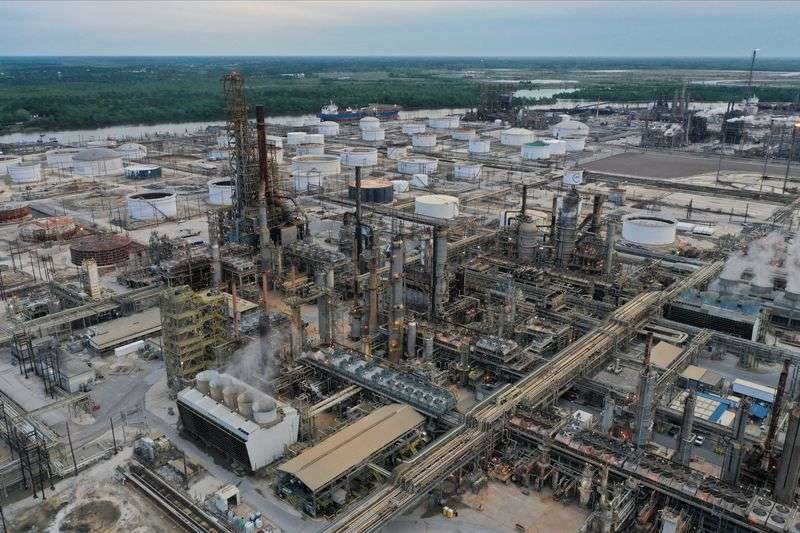Former President Trump’s recent tariffs—25% on oil imports from Canada and Mexico and 10% from China—aim to address a national emergency related to fentanyl and border security. These tariffs are expected to increase costs for U.S. refineries, potentially reducing production and profitability. As U.S. diesel exports decline, European refiners may benefit, while Asian refiners could capitalize on discounted crude. The evolving dynamics may challenge U.S. refiners’ profit margins amid increased operational costs and reliance on Canadian oil.
Trump’s New Tariffs on Oil Imports
On Saturday, former President Trump announced significant tariffs of 25% on imports from Canada and Mexico, alongside a 10% levy on products from China, set to take effect starting Tuesday. This decision is part of the government’s response to a national emergency concerning fentanyl and the unauthorized entry of individuals into the United States, as stated by White House officials. While energy products from Canada will incur a 10% tariff, Mexican energy imports are facing the higher rate of 25%.
Impact on U.S. Refineries and Global Markets
The newly imposed tariffs are expected to raise the costs of heavier crude grades, which are essential for optimal production in U.S. refineries. Industry experts predict that this could diminish profitability and potentially lead to a reduction in production levels. As U.S. refineries grapple with increased costs, refiners in other regions may find opportunities to take advantage of the situation.
Currently, the U.S. exports diesel while importing gasoline. According to David Wech, chief economist at Vortexa, the anticipated drop in U.S. diesel exports may bolster margins for European refiners, while simultaneously creating new export opportunities in the highly competitive gasoline market. A brokerage firm executive noted that the Northeast U.S. will likely need to import more gasoline, benefiting European margins but not necessarily European consumers.
Matias Togni, founder of Next Barrel, suggested that crude sellers affected by the tariffs might have to lower their prices to attract buyers, allowing Asian refiners to capitalize on discounted Mexican and Canadian crude. Randy Hurburun, refining head at Energy Aspects, added that Asian refiners possess the necessary equipment to process heavy crudes and are ramping up production rates.
The expansion of Canada’s Trans Mountain pipeline (TMX), which began in May, now allows for an additional 590,000 barrels per day to be transported to the Canadian Pacific coast. This increase in TMX shipments to China could potentially replace imports from Venezuela and Saudi Arabia, according to trade sources.
In the Asia-Pacific region, refiners may also find fuel arbitrage opportunities to the U.S. West Coast, impacted by rising raw material costs from sourcing crude from farther regions.
Despite the tariffs, Midwest refiners are expected to continue purchasing Canadian crude, likely passing the increased costs onto consumers at the pump. Equity research analyst Stewart Glickman noted that residents in the Midwest might be willing to pay an additional 20 to 25 cents per gallon.
Understanding U.S. Crude Supply Dynamics
In 2023, Canadian and Mexican crude represented approximately 28% of the crude supply for U.S. refiners, as reported by the Energy Information Administration (EIA), with Midwest refineries particularly reliant on Canadian barrels.
Analysts indicate that U.S. refiners’ capacity to replace Canadian and Mexican oil with a more abundant supply of light WTI crude is limited due to the inherent quality differences between these types of oils. Neil Crosby, an analyst at Sparta Commodities, remarked that while some U.S. refineries have upgraded their systems to process more light crudes, this may lead to underutilization of secondary units, affecting both economic performance and operational efficiency.
John England, global sector leader for oil, gas, and chemicals at Deloitte, warned that creating friction in the system regarding crude optimization could lead to increased costs for refiners. The EIA indicated that U.S. imports of Canadian crude reached their highest recorded levels in early January, possibly reflecting refiners’ stockpiling efforts in anticipation of the tariffs. However, imports have slightly decreased since then, averaging 3.72 million barrels per day by late January, still remaining high for the year.
Additionally, U.S. refiners have reported a decline in profits compared to the record levels seen in 2022. For instance, Chevron reported fourth-quarter earnings that fell short of Wall Street expectations, attributed to weak margins that resulted in its refining business incurring a loss for the first time since 2020. The new tariffs and the accompanying price hikes could further challenge U.S. refiners’ ability to maintain strong profit margins.
Crosby emphasized the delicate nature of tariff enforcement between the U.S., Mexico, and Canada, highlighting its potential impact on the competitiveness of the U.S. refining system.
